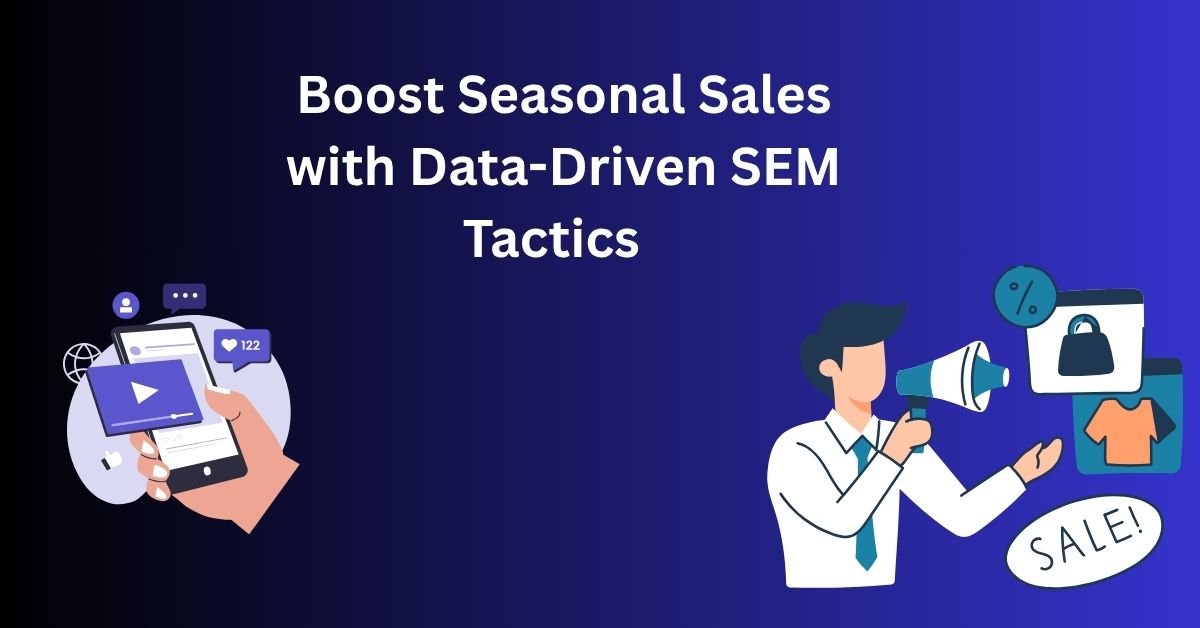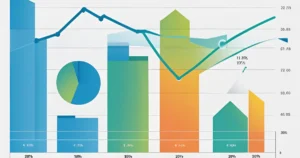
Seasonal sales represent some of the most exciting revenue opportunities for businesses. Whether it’s Black Friday, back-to-school shopping, or holiday sales in December, these short bursts of intensified customer activity offer immense potential—but only if you’re prepared to capitalize on them effectively. One surefire way to make the most of these opportunities? Data-driven search engine marketing (SEM).
But where do you start, and how can you ensure measurable success in a crowded market? This blog explores the power of data-driven SEM tactics to help you drive seasonal sales, outperform competitors, and maximize ROI.
What Is Data-Driven SEM, and Why Is It Essential for Seasonal Sales?
Search Engine Marketing (SEM) is a digital marketing strategy where you use paid advertisements to drive traffic to your website through platforms like Google Ads. With data-driven SEM, you’re adding an extra layer of intelligence to the process. By analyzing audience behavior, seasonal trends, and historical data, you can make smarter decisions that lead to higher sales.
For seasonal sales, where timing and targeting are critical, leaning on data is non-negotiable. It helps you understand when potential customers are searching for deals, what they’re searching for, and which ads catch their attention.
1. Analyze Historical Data to Predict Trends
The key to running successful SEM campaigns during peak sales periods lies in preparation, and that begins with analyzing historical data. Take a look at past campaigns in the same season to uncover trends and patterns.
Things to Analyze:
- Search Volume Trends:
Google Trends is a great tool for understanding how demand for specific products changes throughout the year. For example, if you’re an outdoor gear retailer, “camping tents” might spike each spring.
- CTR (Click-Through Rate) Data:
Identify which ad copy and creatives performed the best in prior seasonal campaigns.
- Conversion Data:
Pay close attention to which time periods generated the most conversions or sales. Did customers buy more during the last three days of a sale? Did countdown timers boost urgency?
This analysis equips you with invaluable insights to refine your keyword strategy, optimize ad bidding, and create compelling campaigns.
2. Fine-Tune Keyword Targeting for Seasonal Relevance
Seasonal customer behavior requires seasonal keywords. Going beyond your typical evergreen keywords and selecting those relevant to the time of year can spell the difference between a basic campaign and one that dominates search results.
Essential Seasonal Keyword Strategies:
- Long-Tail Keywords:
Target niche phrases like “best Black Friday deals on headphones” or “affordable Christmas gifts for kids.” These terms often have lower competition and higher intent.
- Season-Specific Additions:
Add seasonal modifiers, such as “summer,” “winter,” or “holiday,” to standard keywords. For instance, “running shoes” becomes “best running shoes for summer.”
- Geo-Targeting:
Focus on location-specific seasonal keywords, like “ski resorts near Denver deals” or “spring break hotels in Cancun.”
Tools like Google Ads Keyword Planner can help you research trending seasonal keywords for your industry.
3. Adjust Ad Copy for Emotion and Urgency
The moment customers land on your ads, they should feel two things instantly: excitement and urgency. Seasonal sales thrive on these emotions, so tailor your SEM ad copy accordingly.
Best Practices for Seasonal Ad Copy:
- Create a Sense of Urgency:
Use phrases like “Limited Time Offer,” “Ends This Friday,” or “While Supplies Last.”
- Highlight Deals and Benefits:
Include specifics, such as “Save Up to 50%” or “Free Shipping Extended Until Midnight.”
- Lean on Seasonal Language:
Infuse your copy with seasonal vibes. For example, “Sleigh the Holidays with Our Gift Deals” or “Beat the Heat with Cool Summer Savings.”
Pro Tip: Dynamic Keyword Insertion (DKI) in Google Ads allows you to automatically update ad copy based on a customer’s search query, making your ads even more relevant.
4. Leverage Remarketing for Higher Conversions
Not every customer will convert the first time they see your ad. Remarketing ensures you stay top-of-mind for potential buyers who showed interest but didn’t complete their purchase.
How to Optimize Seasonal Remarketing:
- Segment Audiences:
Focus on users who added items to their cart but didn’t check out, or those who clicked on your ad but didn’t buy.
- Offer Exclusive Deals:
Use remarketing ads to showcase limited-time discounts or sweeten the deal with free shipping.
- Timing is Key:
Increase ad frequency as you approach the end of the sale to gently nudge hesitant buyers.
Platforms like Google Ads and Facebook offer robust remarketing tools to help you recapture lost prospects.
5. Track, Measure, and Continuously Optimize
No matter how meticulously you’ve planned your SEM strategy, continuous tracking and optimization during the live campaign are essential for maximizing results.
Metrics to Monitor:
- Impression Share:
Are your ads appearing often enough, or is your bidding too low?
- CTR:
If your click-through rates are underwhelming, consider tweaking your ad copy or keyword strategy.
- Conversion Rates:
Are you meeting your sales goals for each dollar spent?
Use A/B testing to experiment with different ad variations, targeting options, or bidding strategies. Seasonal trends can shift quickly, so stay adaptable.
6. Don’t Forget Mobile Optimization
Seasonal shoppers are frequently on the go, which means they’re often searching and shopping on mobile devices. A seamless mobile experience is critical for turning clicks into conversions.
Tips for Mobile Optimization:
- Mobile-Friendly Landing Pages:
Ensure that your landing pages are responsive and load in under three seconds.
- Click-to-Call Extensions:
Make it easy for users to contact you directly from your search ads.
- Short and Engaging Copy:
Mobile users skim, so get to the point quickly in both your ads and content.
Maximize Your Seasonal Strategy with SEM
Driving seasonal sales doesn’t happen by chance. It requires preparation, agility, and most importantly, data-driven SEM tactics. From analyzing trends to crafting keyword strategies and optimizing ad copy, taking a methodical, data-backed approach can give you the competitive edge you need.
If you’re looking for the ultimate boost to your seasonal campaigns, don’t go it alone. Partner with experts or explore advanced marketing tools to refine your strategy further and outshine the competition.
Are you ready to dominate your next seasonal sale? Implement these strategies and watch your campaign results soar to new heights.
Learn about: How to Choose Keywords for SEM



Leave a Reply